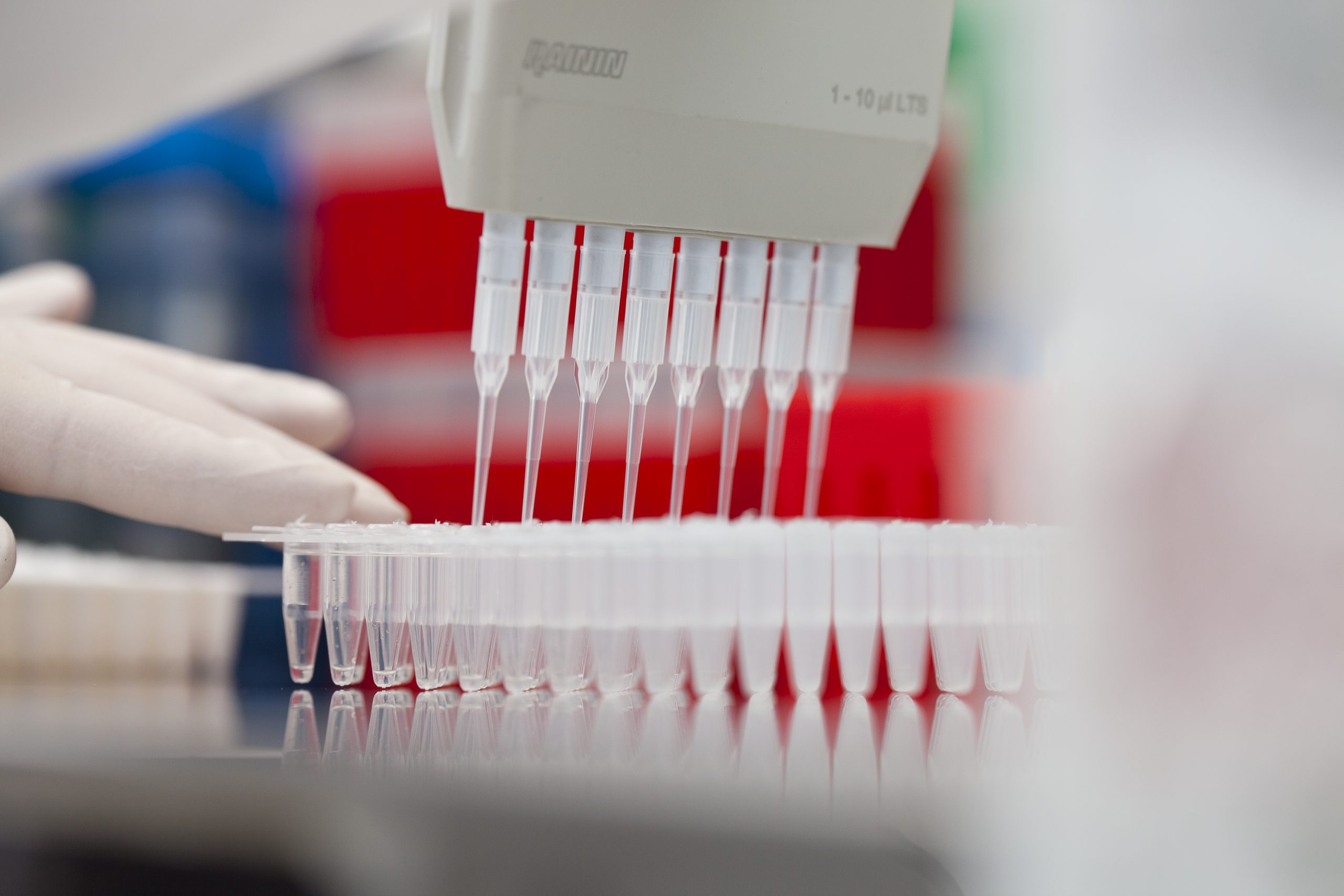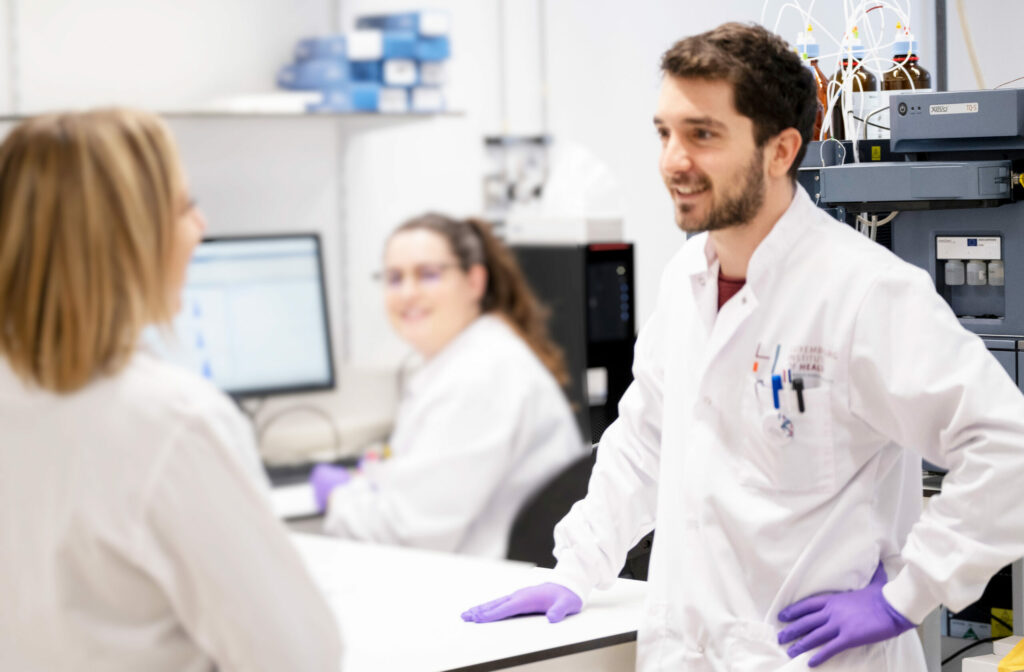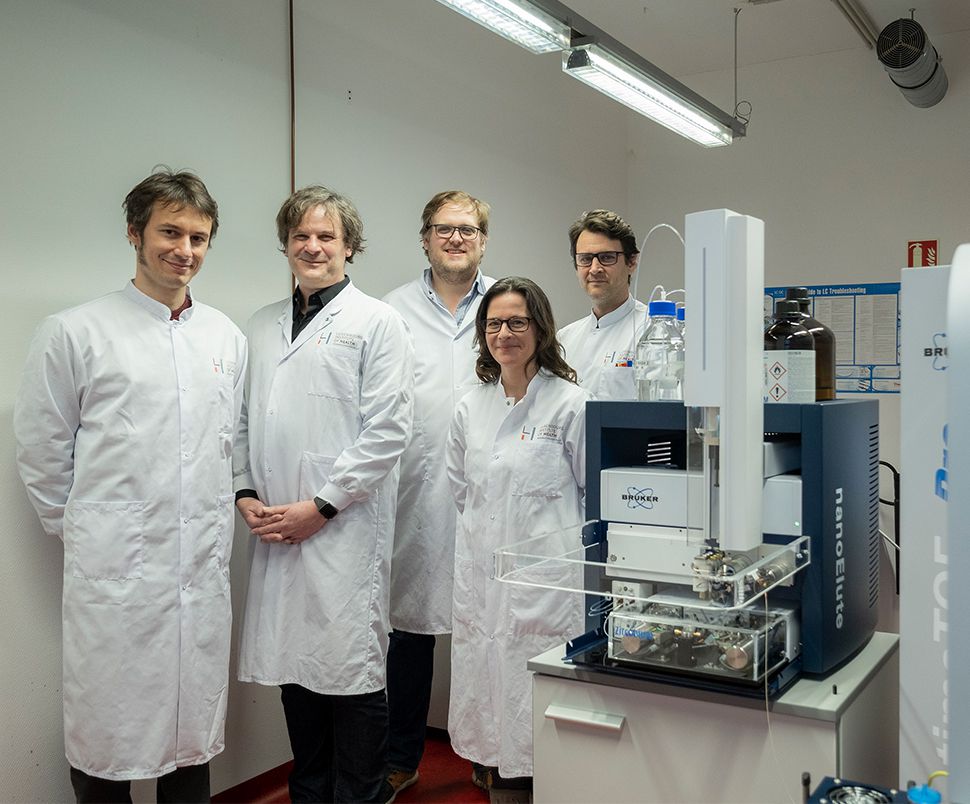
Proteomics of Cellular Signaling
The Proteomics of Cellular Signaling group uses proteomic analysis to assess the effect of post-translational modification in signaling pathways in both health and disease.
activities
Proteins are the central players in cellular functions. They are functional units that are essential for cell structure. They are molecular machines, which can create power, regulate cellular signals or catalyse biochemical processes. Studying proteins can provide insight into what defines health and disease. We are using quantitative mass spectrometry-based proteomics as the central methodology of our research.
We are interested in two central questions: First, how does post-translational modification alter the interaction network and the signaling of cellular systems and tissues, and second how can we use proteomic analysis to analyse patient samples to develop diagnostic markers.

Dittmar
Projects & clinical trials
Some of the group’s research projects include:
- Regulation of immunological processes by ubiquitin signaling.
- How are post-translational modifications (PTM) change cellular signaling using large-scale interactome studies
- Development of biomarkers using targeted proteomics on patient cohorts.
How is the PTM code regulating the interactions of transcription factors?
Transcription factors (TF) are at the heart of cellular regulation. They bind to DNA and allow the transcription of genes. The regulation of TFs is essential for the normal function of a cell. TFs are highly modified by different PTMs. These PTMs can alter the binding of TFs to DNA directly, or they can change the interaction with other proteins, the so-called interactome. By studying all interactions simultaneously, we can get a general overview of how interactions are changing in response to PTM-modifications. This can lead to a better understanding of how misregulation of PTMs can lead to diseases. An example is the methylation of a single arginine residue in the transcription factor C/EBP ß, which leads to changes in fat cell differentiation.
- Ramberger, E. et al. PRISMA and BioID disclose a motifs-based interactome of the intrinsically disordered transcription factor C/EBPα. iScience 24, 102686 (2021).
- Ramberger, E. et al. Universal peptide matrix pulldown approach for mapping mutation-, PTM-, and SLiM-dependent protein interactions. Mol Cell Proteomics.
- Hernandez, D. P. & Dittmar, G. Peptide array–based interactomics. Anal Bioanal Chem (2021) doi:10.1007/s00216-021-03367-8.
- Ramberger, E. et al. A comprehensive motifs-based interactome of the C/EBPα transcription factor. iScience (2020) doi:10.1101/2020.12.28.424569.
- Dittmar, G. et al. PRISMA: Protein Interaction Screen on Peptide Matrix Reveals Interaction Footprints and Modifications- Dependent Interactome of Intrinsically Disordered C/EBPβ. iScience 13, 351–370 (2019).
Development of diagnostic disease markers
Early diagnosis of diseases increases the chances for successful treatment. We are using targeted mass spectrometric methods to measure the composition of different body fluids. Here, identifying a set of proteins, which can be used to predict disease progression, is the project’s major goal.
- Coll-de la Rubia, E. et al. Prognostic Biomarkers in Endometrial Cancer: A Systematic Review and Meta-Analysis. JCM 9, 1900 (2020).
- Lesur, A. & Dittmar, G. The clinical potential of prm-PASEF mass spectrometry. Expert Review of Proteomics 18, 75–82 (2021).
- Lesur, A. et al. Highly Multiplexed Targeted Proteomics Acquisition on a TIMS-QTOF. Anal. Chem. 93, 1383–1392 (2021).
Regulation of the transcription factor HIF1-alpha by the ubiquitin-system
The transcription factor HIF1a is the central regulator for sensing oxygen levels in a cell and regulating the cell’s metabolism in response to that. Recent data from different laboratories points to alternative regulatory pathways involved in regulating Hif1a besides the well-described regulation by the ubiquitin-E3 ligase VHL. We are using a combination of molecular biology-based techniques and proteomic analysis to shed light on these new regulatory pathways.
Featured team members
Scientific publications
-
Proteomics identification of novel proteins dysregulated in Alzheimer’s Disease with potential as blood-based biomarkersand related to Amyloid-Beta Plaques – 03/01/2025
-
Eleven shades of PASEF – 24/10/2024
-
Time-resolved proximity proteomics uncovers a membrane tension-sensitive caveolin-1 interactome at the rear of migrating cells – 24/09/2024
-
Proteomic analysis of horse hair extracts provides no evidence for the existence of a hypoallergenic Curly Horse breed – 01/02/2024
-
Microtubule association of TRIM3 revealed by differential extraction proteomics – 27/12/2023
-
Using PrISMa to reveal the interactome of the human claudins family – 26/09/2023
-
Glioblastoma-instructed microglia transit to heterogeneous phenotypic states with phagocytic and dendritic cell-like features in patient tumors and patient-derived orthotopic xenografts – 12/12/2023
-
Stable Isotope-Assisted Untargeted Metabolomics Identifies ALDH1A1-Driven Erythronate Accumulation in Lung Cancer Cells – 19/10/2023
-
Queuosine-tRNA promotes sex-dependent learning and memory formation by maintaining codon-biased translation elongation speed – 01/01/2023
-
Integrative omics analysis of IDH1 mutant glioma patients reveals alterations in butyrate metabolism – 08/09/2023
Related News

Job vacancies
There are no jobs matching this page at the moment. You can view all jobs via the button below.







